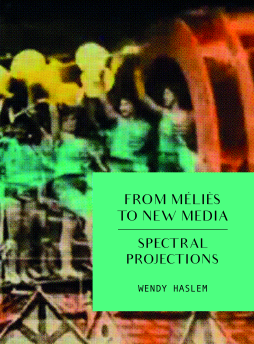
Additional Information
Book Details
Abstract
From Méliès to New Media contributes to a dynamic stream of film history that is just beginning to understand that new media forms are not only indebted to, but firmly embedded within the traditions and conventions of early film culture. Adopting a media archaeology, this book will present a comparative examination of cinema including early film experiments with light and contemporary music videos, silent film and their digital restorations, German Expressionist film and post-noir cinema, French Gothic film and the contemporary digital remake, Alfred Hitchcock’s films exhibited in the gallery, post medium films as abstracted light forms and interactive digital screens revising experiments in precinema. Media archaeology is an approach that uncovers the potential of intermedial research and, as a fluid form of history. It envisages the potential of new discoveries that foreground forgotten or marginalized contributions to history. It is also an approach that has been championed by influential new historicists like Thomas Elsaesser as providing the most vibrant and productive new histories (2014).
Wendy Haslem teaches and researches the intersections of film history and new media in the Screen Studies program at The University of Melbourne. She is the author of A Charade of Innocence and Vice: Hollywood Gothic Films of the 1940s (2009), co-author of Experimenta: Playground (2007) and co-editor of the anthologies Super/Heroes: From Hercules to Superman (2007) and Superhero Bodies: Identity, Materiality, Transformation (2018).
‘The aim is not simply to offer a linear history of influence and
precedence, by which cinema anticipates contemporary media, but to
intervene in questions of history and historiography, complicating the
very notion of a linear and singular history. Accordingly, each chapter
moves backwards and forwards in time, finding creative meeting points, and
the book as a whole suggests a dynamic matrix of connections across moving
image histories and texts.’ – Andrew Utterson, Ithaka College
Table of Contents
| Section Title | Page | Action | Price |
|---|---|---|---|
| Cover | Cover | ||
| Half Title | i | ||
| Title | iii | ||
| Copyright | iv | ||
| Contents | v | ||
| List of Illustrations | vii | ||
| Acknowledgements | ix | ||
| Introduction: Beginnings and Ends: Historical Collusion | 1 | ||
| Chapter 1: Cigarette Burns and Bullet Holes: Celluloid Cues in Digital Cinema | 3 | ||
| Section I: Early Cinema: Colour and Spectrality | 33 | ||
| Chapter 2: Applied Colour: Chromatic Frankenstein’s Monsters? | 35 | ||
| Chapter 3: The Serpentine Dance Films: ‘Dream Visions That Change Ten Thousand Times a Minute’ | 57 | ||
| Section II: Luminescence, Montage and Frame Ratios | 77 | ||
| Chapter 4: Memory and Noir: Neon Contrasts | 79 | ||
| Chapter 5: Cutting: Shock and Endurance | 101 | ||
| Chapter 6: Screens, Scale Ratio: Vertical Celluloid in the Digital Age | 119 | ||
| Section III: Cinema Beyond the Frame | 139 | ||
| Chapter 7: Hallucinatory Framing and Kaleidoscopic Vision | 141 | ||
| Chapter 8: Ephemeral Screens: The Muybridgizer | 163 | ||
| Bibliography | 179 | ||
| Index | 187 | ||
| Back Cover | Back Cover |
